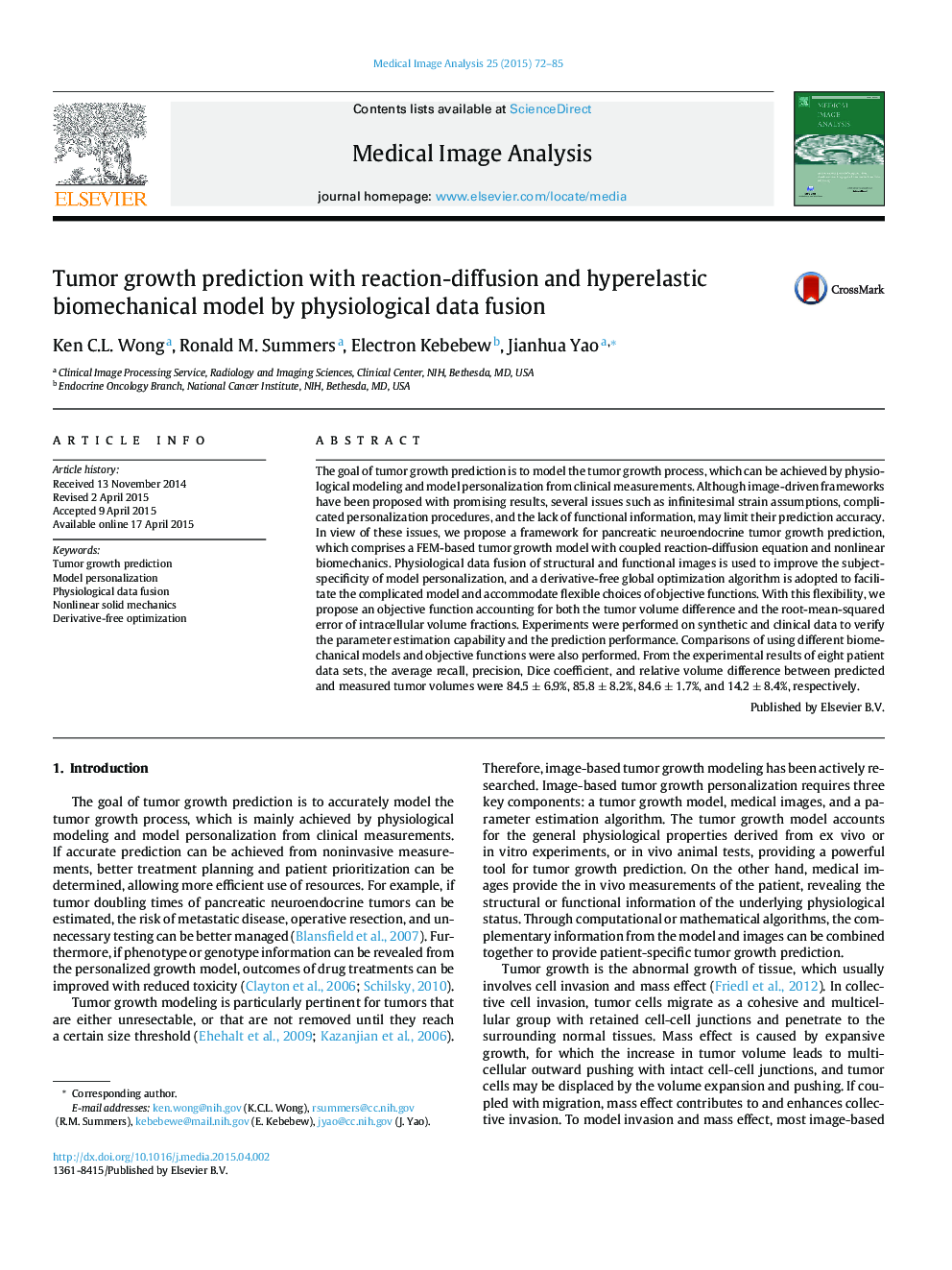| کد مقاله | کد نشریه | سال انتشار | مقاله انگلیسی | نسخه تمام متن |
|---|---|---|---|---|
| 444023 | 692846 | 2015 | 14 صفحه PDF | دانلود رایگان |
• Tumor growth prediction with physiological data fusion.
• A tumor growth model with reaction-diffusion and hyperelastic biomechanical model.
• A derivative-free global optimization algorithm for model parameter estimation.
• Physiological data fusion of contrast-enhanced CT and FDG-PET images.
• Average prediction performance: Dice = 84.6%, relative volume difference = 14.2%.
The goal of tumor growth prediction is to model the tumor growth process, which can be achieved by physiological modeling and model personalization from clinical measurements. Although image-driven frameworks have been proposed with promising results, several issues such as infinitesimal strain assumptions, complicated personalization procedures, and the lack of functional information, may limit their prediction accuracy. In view of these issues, we propose a framework for pancreatic neuroendocrine tumor growth prediction, which comprises a FEM-based tumor growth model with coupled reaction-diffusion equation and nonlinear biomechanics. Physiological data fusion of structural and functional images is used to improve the subject-specificity of model personalization, and a derivative-free global optimization algorithm is adopted to facilitate the complicated model and accommodate flexible choices of objective functions. With this flexibility, we propose an objective function accounting for both the tumor volume difference and the root-mean-squared error of intracellular volume fractions. Experiments were performed on synthetic and clinical data to verify the parameter estimation capability and the prediction performance. Comparisons of using different biomechanical models and objective functions were also performed. From the experimental results of eight patient data sets, the average recall, precision, Dice coefficient, and relative volume difference between predicted and measured tumor volumes were 84.5 ± 6.9%, 85.8 ± 8.2%, 84.6 ± 1.7%, and 14.2 ± 8.4%, respectively.
Figure optionsDownload high-quality image (348 K)Download as PowerPoint slide
Journal: Medical Image Analysis - Volume 25, Issue 1, October 2015, Pages 72–85
